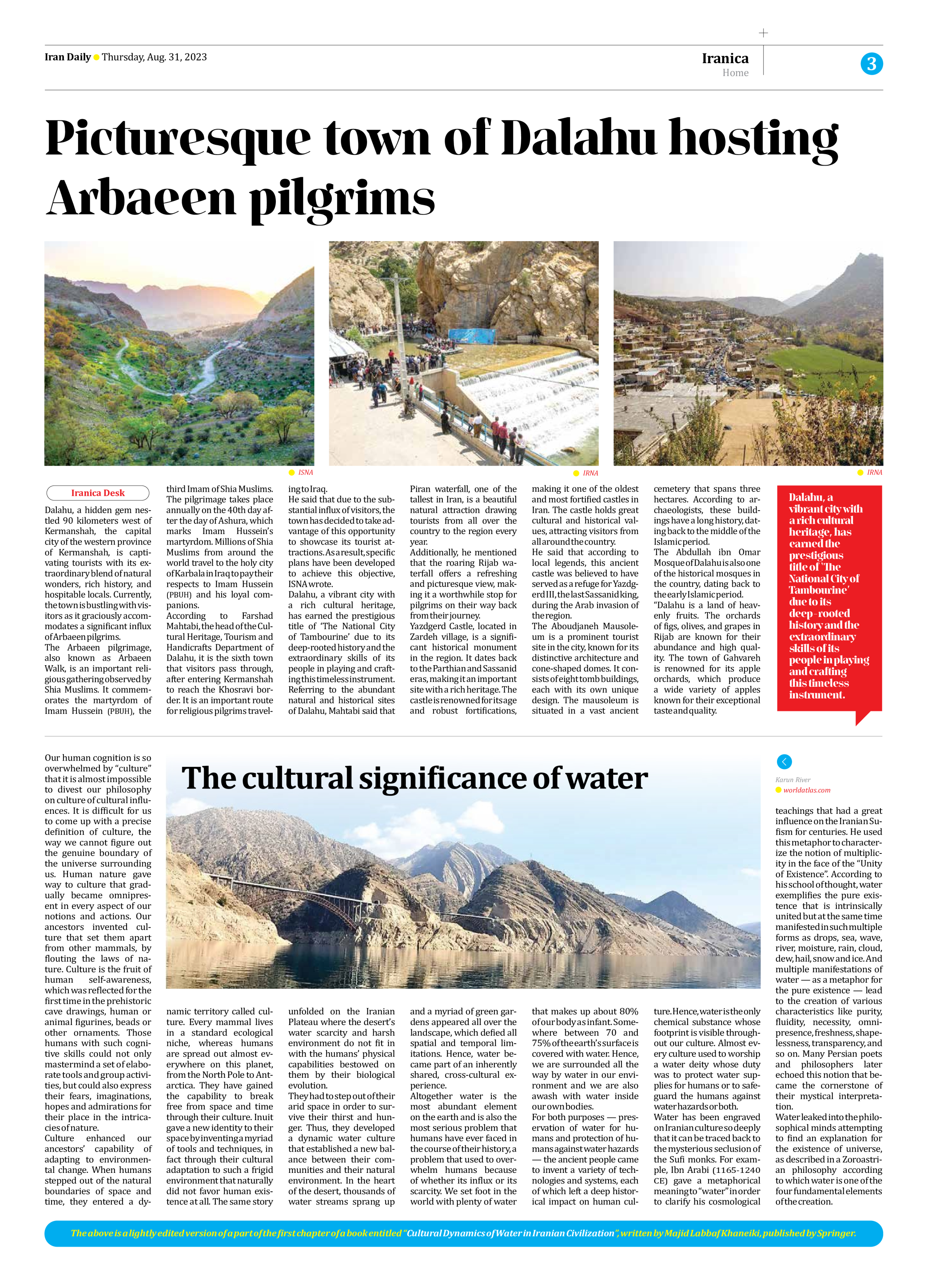
The cultural significance of water
Our human cognition is so overwhelmed by “culture” that it is almost impossible to divest our philosophy on culture of cultural influences. It is difficult for us to come up with a precise definition of culture, the way we cannot figure out the genuine boundary of the universe surrounding us. Human nature gave way to culture that gradually became omnipresent in every aspect of our notions and actions. Our ancestors invented culture that set them apart from other mammals, by flouting the laws of nature. Culture is the fruit of human self-awareness, which was reflected for the first time in the prehistoric cave drawings, human or animal figurines, beads or other ornaments. Those humans with such cognitive skills could not only mastermind a set of elaborate tools and group activities, but could also express their fears, imaginations, hopes and admirations for their place in the intricacies of nature.
Culture enhanced our ancestors’ capability of adapting to environmental change. When humans stepped out of the natural boundaries of space and time, they entered a dynamic territory called culture. Every mammal lives in a standard ecological niche, whereas humans are spread out almost everywhere on this planet, from the North Pole to Antarctica. They have gained the capability to break free from space and time through their culture. Inuit gave a new identity to their space by inventing a myriad of tools and techniques, in fact through their cultural adaptation to such a frigid environment that naturally did not favor human existence at all. The same story unfolded on the Iranian Plateau where the desert’s water scarcity and harsh environment do not fit in with the humans’ physical capabilities bestowed on them by their biological evolution.
They had to step out of their arid space in order to survive their thirst and hunger. Thus, they developed a dynamic water culture that established a new balance between their communities and their natural environment. In the heart of the desert, thousands of water streams sprang up and a myriad of green gardens appeared all over the landscape, which defied all spatial and temporal limitations. Hence, water became part of an inherently shared, cross-cultural experience.
Altogether water is the most abundant element on the earth and is also the most serious problem that humans have ever faced in the course of their history, a problem that used to overwhelm humans because of whether its influx or its scarcity. We set foot in the world with plenty of water that makes up about 80% of our body as infant. Somewhere between 70 and 75% of the earth’s surface is covered with water. Hence, we are surrounded all the way by water in our environment and we are also awash with water inside our own bodies.
For both purposes — preservation of water for humans and protection of humans against water hazards — the ancient people came to invent a variety of technologies and systems, each of which left a deep historical impact on human culture. Hence, water is the only chemical substance whose footprint is visible throughout our culture. Almost every culture used to worship a water deity whose duty was to protect water supplies for humans or to safeguard the humans against water hazards or both.
Water has been engraved on Iranian culture so deeply that it can be traced back to the mysterious seclusion of the Sufi monks. For example, Ibn Arabi (1165-1240 CE) gave a metaphorical meaning to “water” in order to clarify his cosmological teachings that had a great influence on the Iranian Sufism for centuries. He used this metaphor to characterize the notion of multiplicity in the face of the “Unity of Existence”. According to his school of thought, water exemplifies the pure existence that is intrinsically united but at the same time manifested in such multiple forms as drops, sea, wave, river, moisture, rain, cloud, dew, hail, snow and ice. And multiple manifestations of water — as a metaphor for the pure existence — lead to the creation of various characteristics like purity, fluidity, necessity, omnipresence, freshness, shapelessness, transparency, and so on. Many Persian poets and philosophers later echoed this notion that became the cornerstone of their mystical interpretation.
Water leaked into the philosophical minds attempting to find an explanation for the existence of universe, as described in a Zoroastrian philosophy according to which water is one of the four fundamental elements of the creation.
The above is a lightly edited version of a part of the first chapter of a book entitled “Cultural Dynamics of Water in Iranian Civilization”, written by Majid Labbaf Khaneiki, published by Springer.







